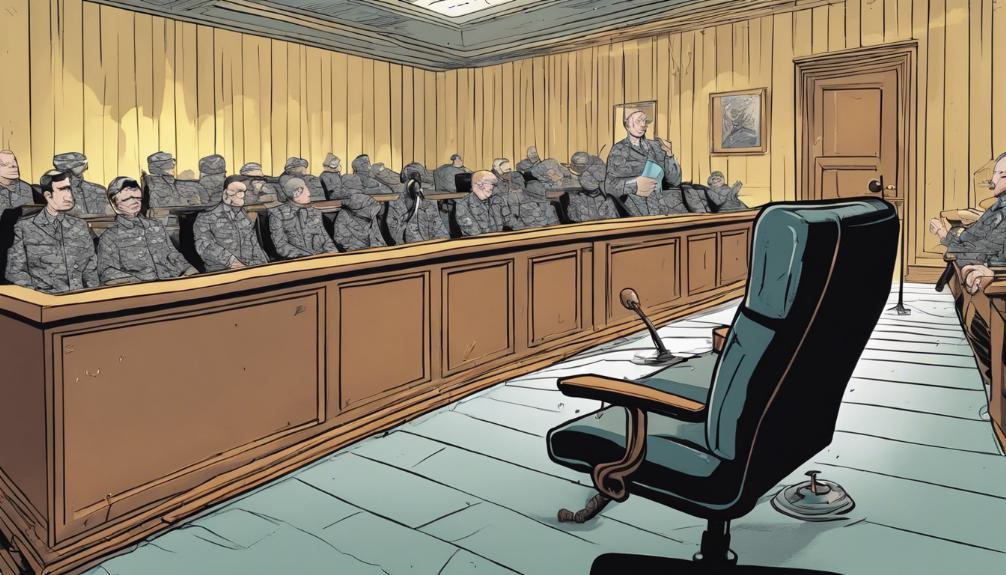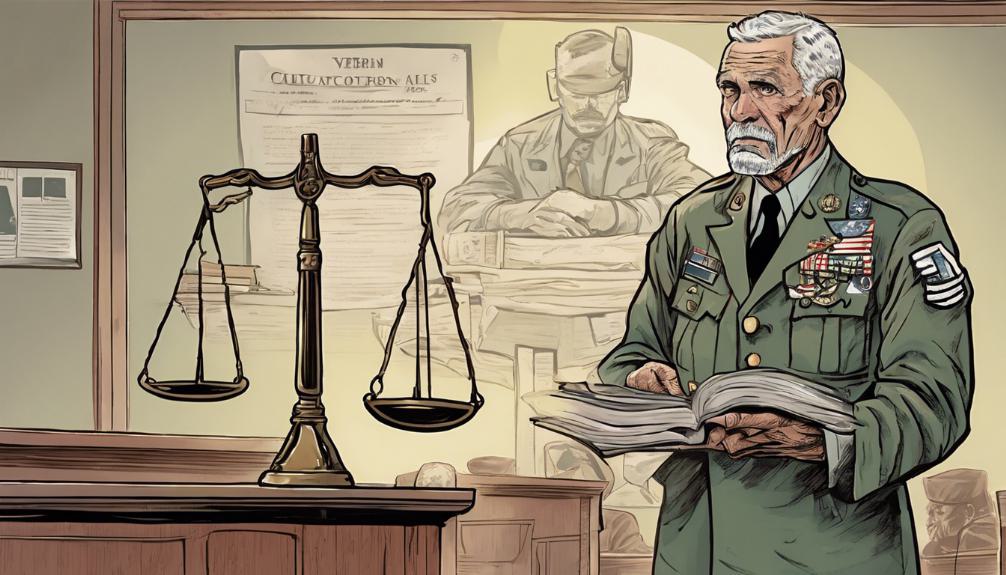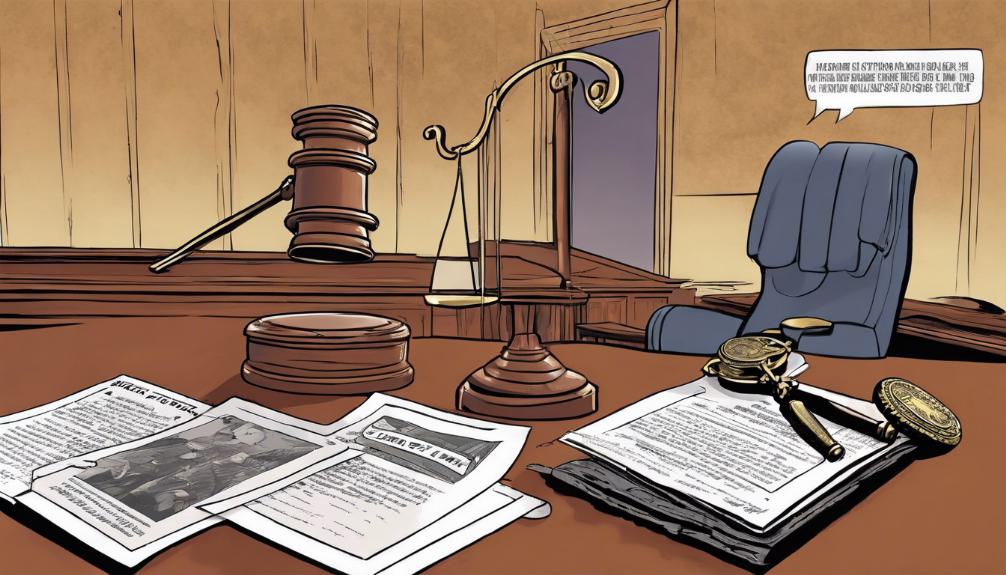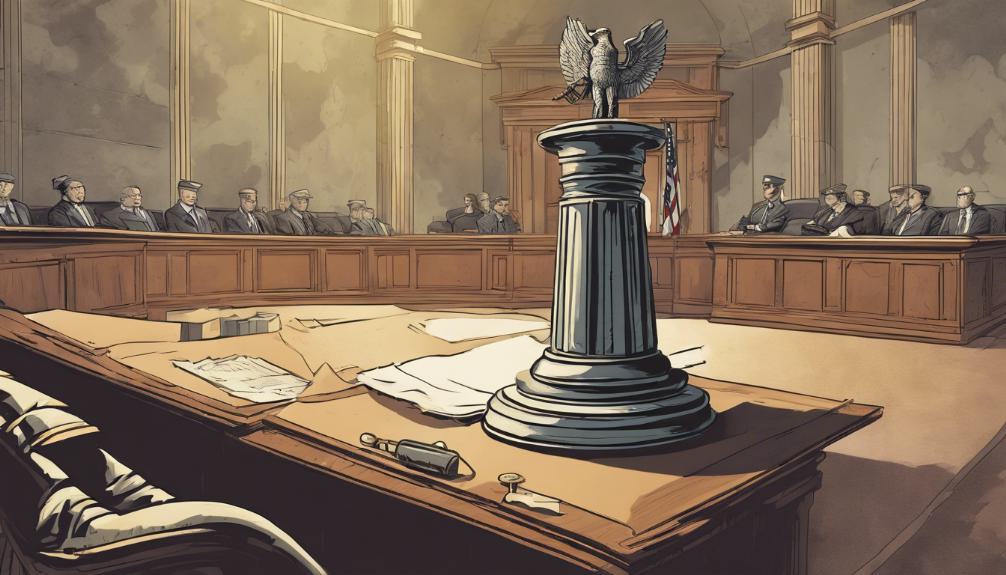Military Asbestos Exposure Lawsuit: Were You or A Loved One Injured After Being Exposed To Asbestos
The intersection of military service and asbestos exposure has precipitated a complex legal and health landscape that demands attention. For decades, countless service members faced unwitting exposure to asbestos, a material once ubiquitous in military infrastructure and equipment, with grave implications for their health. This article unpacks the multifaceted issue, scrutinizing the extent of exposure, the dire health consequences veterans may endure, and the legal avenues open to those seeking redress. As we navigate through the intricacies of asbestos-related litigation and the pursuit of compensation, one must consider the broader implications for veterans' rights and the accountability of institutions responsible for their care.

Asbestos Exposure in the Military
During the period from 1930 to 1980, military personnel were extensively exposed to asbestos-containing materials, utilized in a variety of applications ranging from construction to equipment maintenance, posing significant health risks. Asbestos, known for its heat resistance and insulating properties, was a common component in military ships, vehicles, and aircraft, as well as in the construction materials of barracks and other military buildings. Veterans who served in Iraq, the Middle East, Southeast Asia, and other regions faced additional exposure risks from damaged buildings and infrastructure. The pervasive use of asbestos in military settings not only encompassed direct contact but also involved environments where asbestos fibers could become airborne, increasing the risk of inhalation by personnel without their knowledge.
Health Risks and Statistics

Understanding the extensive use of asbestos in military applications underscores the importance of recognizing the health risks and statistical data regarding asbestos-related diseases among veterans. Asbestos, used prolifically in military infrastructure and equipment from 1930 to 1980, has left a legacy of health complications. Veterans, constituting a significant portion of those affected by asbestos-related conditions, face diseases beyond mesothelioma, including lung cancer and asbestosis. Estimates suggest a vast number of veterans were exposed to asbestos, particularly those who served in roles where the material's use was prevalent. The potential health effects range from mild respiratory issues to severe, life-threatening illnesses, highlighting the critical need for awareness and preventive measures against asbestos exposure in military settings.
Mesothelioma and Veterans

Mesothelioma, a devastating consequence of asbestos exposure, disproportionately affects veterans due to their service-related environments. Historically, military occupations and the settings in which veterans have served have been rife with asbestos-containing materials. This is especially true for those who served between the 1930s and 1980s, a period when asbestos use was rampant in military infrastructure, vehicles, and vessels. The latency period of mesothelioma, often several decades, means symptoms can appear long after exposure, complicating diagnosis and treatment. The prevalence of mesothelioma among veterans underscores the need for awareness, monitoring, and specialized healthcare options to address this significant health issue. It highlights the legacy of asbestos use in military contexts and its enduring impact on those who served.
Lawsuit Cases Overview

Given the significant health issues faced by veterans due to asbestos exposure, numerous lawsuit cases have emerged, seeking compensation and justice for affected individuals. These cases often involve claims against manufacturers of asbestos-containing materials used across various branches of the military. Veterans who developed mesothelioma, lung cancer, and other asbestos-related diseases have pursued legal action to cover medical expenses, lost wages, and pain and suffering. The litigation landscape is complex, involving specific statutes of limitations and the need for detailed exposure histories. Successful claims hinge on demonstrating direct links between military asbestos exposure and subsequent health issues. As awareness grows, so does the number of lawsuits, reflecting the widespread impact of asbestos across different service periods and military roles.
Navy and Asbestos Dangers

The U.S. Navy's extensive use of asbestos-containing materials in ships and shipyards from the mid-20th century has led to significant health risks for veterans. Asbestos was widely utilized for its heat-resistant properties in numerous applications, including insulation, gaskets, and brakes. This pervasive use meant that Navy personnel, especially those involved in ship construction, maintenance, and repair, were at a heightened risk of exposure. The confined spaces within ships exacerbated exposure levels, significantly increasing the risk of developing asbestos-related diseases such as mesothelioma and lung cancer. Given the latency period of these diseases, many veterans are only now experiencing symptoms, decades after their initial exposure. This historical oversight has left a lasting impact on the health and wellbeing of countless Navy veterans.
Compensation for Veterans

Veterans suffering from asbestos-related diseases often find themselves navigating the complex process of seeking compensation for their injuries. The U.S. Department of Veterans Affairs (VA) offers benefits to veterans diagnosed with asbestos-related diseases, assuming the exposure occurred during military service. Eligibility for VA benefits can lead to disability compensation, healthcare services, and even dependency and indemnity compensation for surviving family members. Beyond VA benefits, veterans may have access to asbestos trust funds established by bankrupt companies responsible for asbestos exposure. These funds aim to compensate individuals harmed by asbestos products, including military personnel. While navigating these avenues can be daunting, the compensation awarded plays a crucial role in covering medical expenses and providing financial support to veterans and their families affected by asbestos-related conditions.
Legal Options Explored

Exploring the legal avenues available, veterans suffering from asbestos-related diseases have several options for pursuing compensation beyond VA benefits. Many may not be aware that they can file lawsuits against the manufacturers of asbestos-containing products. This legal route is distinct from seeking VA benefits and allows veterans to potentially recover damages for medical expenses, pain and suffering, and lost wages. Additionally, some may have the opportunity to claim compensation from asbestos trust funds, established by bankrupt companies to pay victims of asbestos exposure. It's crucial to understand that these legal actions do not affect a veteran's eligibility for VA benefits and can provide a supplementary avenue for justice and financial support.
Seeking Legal Support

Navigating the legal landscape of asbestos exposure claims requires specialized knowledge and expertise, often leading victims to seek support from experienced injury lawyers. These legal professionals are well-versed in the intricacies of military asbestos exposure lawsuits, including identifying liable parties, collecting evidence, and navigating the compensation process. They play a crucial role in representing victims and their families, aiming to secure the compensation necessary for covering medical expenses, lost wages, and other damages. With the complexity of these cases and the challenges of proving exposure and resultant health issues, having a dedicated legal team becomes indispensable. Their expertise not only enhances the chances of a successful claim but also provides invaluable guidance through the often daunting legal proceedings associated with asbestos exposure.
Consulting Healthcare Professionals

Consulting with healthcare professionals is a critical step for veterans who have been exposed to asbestos, as early detection can significantly impact treatment outcomes. Veterans who suspect they've been exposed to asbestos during their military service should seek immediate medical attention, even if symptoms have not yet surfaced. Healthcare professionals can conduct a series of tests, including imaging scans and lung function tests, to assess the presence of asbestos-related diseases such as mesothelioma, lung cancer, or asbestosis. These evaluations are essential for diagnosing conditions early, which can lead to more effective treatment options. Additionally, medical documentation of asbestos exposure and its health impacts is crucial when pursuing legal action for compensation. Veterans are encouraged to discuss their military history and potential asbestos exposure with their healthcare provider to ensure a comprehensive evaluation.
Frequently Asked Questions
How Does the Statute of Limitations Vary by State for Filing an Asbestos-Related Lawsuit for Military Veterans?
The statute of limitations for filing an asbestos-related lawsuit for military veterans varies significantly by state. This legal timeframe dictates how long after diagnosis or discovery of an asbestos-related condition a veteran has to initiate legal action. It's crucial for veterans to understand that this period can range from a few years to several, depending on the jurisdiction. Prompt consultation with a legal expert is advised to navigate these variances effectively.
Can Family Members of Deceased Veterans Who Died From Asbestos-Related Diseases File a Lawsuit on Their Behalf, and What Are the Specific Requirements?
Family members of deceased veterans who succumbed to asbestos-related diseases may be eligible to file a lawsuit on their behalf. Specific requirements for such legal actions include proving the veteran's exposure to asbestos during military service and establishing a direct link between the exposure and the disease. It's imperative for family members to consult with legal professionals specializing in asbestos litigation to navigate the complexities of these cases and explore their eligibility for compensation.
What Steps Should Veterans Take if They Were Exposed to Asbestos Post-1980, Considering Most Known Military Exposures Occurred Between 1930 and 1980?
Veterans exposed to asbestos post-1980 should first consult a healthcare professional for a thorough medical evaluation to identify any asbestos-related conditions. Subsequently, documenting any exposure and medical findings is crucial. They should also contact the Department of Veterans Affairs (VA) to explore eligibility for benefits and compensation. Seeking legal advice is recommended to understand potential claims against responsible parties. Awareness and proactive steps are essential for managing health risks associated with asbestos exposure.
How Does Asbestos Exposure in Military Settings Compare to Civilian Exposures in Terms of Risk Levels and Types of Diseases Contracted?
Asbestos exposure in military settings often presents a higher risk level compared to civilian exposures due to the extensive use of asbestos-containing materials in military equipment, vehicles, and facilities. Military personnel might be exposed to more concentrated levels of asbestos, increasing their risk of developing severe asbestos-related diseases such as mesothelioma, lung cancer, and asbestosis. These risks are compounded by the unique environments and conditions in which military operations occur.
Are There Any Specific Documentation or Evidence Veterans Should Collect and Preserve Once Asbestos Exposure Is Suspected, Before Initiating a Legal Case?
When veterans suspect asbestos exposure, it is crucial to meticulously gather and safeguard documentation and evidence before commencing legal proceedings. This includes medical records detailing diagnoses and treatments, employment or service records indicating potential exposure periods and locations, witness testimonies corroborating exposure, and any prior communications with military or medical personnel regarding asbestos concerns. Collecting comprehensive evidence strengthens the case, facilitating the pursuit of rightful compensation for asbestos-related injuries.

This post has been generated by AI and was not reviewed by editors. This is Not legal advice. Please consult with an attorney.




